#15th centur
Text
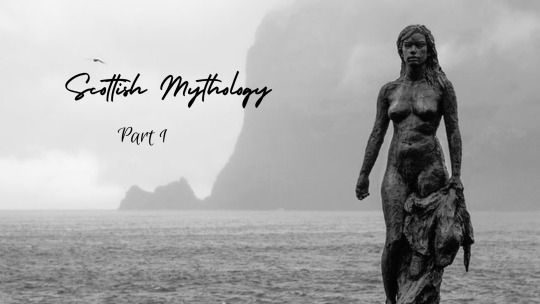
Scottish Mythology (Part 1)
Hey guys, and welcome to the first part of a mini series on Scottish Mythology! Let's jump right in shall we?
* Disclaimer: All sources will be listed in the event of curious minds wanting to read the articles for more details.
Mythical creatures
Loch Ness Monster
When one talks of Scotland, one first thinks of all the stories of monsters and vicious beasts lurking in the shadows and murky waters.
Our first entrant to this story would of course be the Loch Ness Monster, or Nessie as natives dubbed him.
Now it is said that the Loch Ness monster is a gigantic marine serpent-like creature, believed to live in Loch Ness in the Scottish Highlands. Although it is considered a myth, there are numerous 'sightings' of Nessie, the most prominent one being the 'surgeon's photograph' in 1934 by the English physician Robert Kenneth Wilson. In 1994 though, it was said that Wilson played a hoax on the people, Marmaduke Wetherell claiming that Nessie was merely a wooden stick and toy head pasted on a toy submarine.
Disvovered notes and documents of Nessie go back as far as 565 A.D, the biography of Irish missionary St. Columba mentioning the frightening beast of Loch Ness. There were many debates on whether it was indeed just a myth or indeed fact, scientists trying to prove it by sampling and testing the waters of Loch Ness for DNA that might connect their dots to the monster, but sadly nothing of the sort come from it. It was rather found that Loch Ness was indeed home to a large amount of eels, making people think that the Loch Ness monster was just an over-sized eel that you would probably find in a children's book.
Kelpie
This water-spirit is found lurking the waters all over Scottish folklore with a sinister reputation of drowning innocent individuals. The Kelpie is a shape-shifter, but is mostly depicted as a horse with the ability to turn to human form as well, being the most common of Scottish folklore water spirits, but records and transcriptions of this monster is often mis-spelled.
The Kelpie is seen as a beautiful black horse with reversed hooves. Now this trait is shared between the Kelpie and the Scandinavian Nykur. The Kelpie is portrayed differently by various tribes and cultures, the Aberdeenshire myth showing the Kelpie as a horse with serpents as his mane. People from the River Spey claim that the spirit is indeed white, who lured their victims with the act of singing, curious souls getting into the water and onto its back, ultimately taken further into the depths and then drowned.
Kelpies became very well-known in stories from the 1800's but earliest records date back to the 6th and 9th century.
Banshee
The Banshee, or Ban Sith (Woman of the Fairies), is not someone you would want to meet in person. The banshee is an omen of death, being a supernatural being that proclaimed the death of individual by her screaching wails at night. Legends go that whoever heard the cry of the Banshee, would later discover the death of a family member.
Although people see this woman as fiction, there are actually ways on summoning a banshee. One of these rituals commense when the person takes the combination of Wormwood, Condensed Fear and Graveyard Dust and burns it on a Brazier with Altar Power with flint or steel. If the ritual is successful, in the time frame of about 30 seconds, a banshee will make her appearance, but there is a catch. This ritual also has the high risk of summoning a Poltergeist - not something you would want in your home or anywhere near you as matter of fact.
Unicorn
The unicorn is without any doubt the most famous of Scottish mythical creatures, in fact, it is so popular and wide-spread that the unicorn is the Scottish national animal!
Unicorns have been connected to the Scottish lands for centuries upon centuries, first mentioned in the 12th century when William I first introduced the unicorn on the Scottish Royal Coat of Arms, later making their comeback in the 15th century when gold coins showcasing unicorns were distributed. The Scottish Royal Coat of Arms depicted 2 unicorns holding a shield, but that scene was changed in 1603 when James VI of England changed the left unicorn to the image of a lion, as England and Scotland became united.
The unicorn is an image of purity, innocene, masculinity and power, various tales of dominance and chilvary pinning to this fnatastic beast of sorts. The unicorn is believed to be one of the strongest animals, thus the reason the unicorn is symbolised with a golden chain around its neck and body on the Scottish Coat of Arms. The story goes that unicorns could only be tamed by a virgin maiden, and the golden chains show that the Scottish Kings were strong enough to even defeat the strength of the unicorn. The unicorn's horn is said to have the power of purifying poisoned water and that they have incredible healing qualities.
Witchcraft in Scotland
Witchcraft was prominent in Scotland throughout the 16th to 18th centuries. Throughout this time, multiple prosecutions took place connected with crimes done by witchcraft, and were documented as a part of a series of trials that took place in early modern Europe.
In the middle age only a handful of these prosecutions took place as claims and rumors came that people within the villages were victims of witchcraft, but witchcraft relations were only seen as crimes when the Witchcraft Act was passed in 1563, which stated that that any form of magic, witchcraft or consulting with a witch was considered a capital crime.
The first of the big trials were in 1590 with the North Berwick witch trials, in which King James was considered both a victim and investigator. He later published a piece on witchcraft and the defense of witch-hunting, called Daemonology. This book handled on contemporary necromancy and historicall relationships formed between various methods of divination used from ancient black magic. It also includes a study on the topics of werewolves and vampires, demons and demonology itself, but mainly focused on the history, practices and implications of sorcery, and reasons for trying and prosecuting a witch in Christian society. It is believed that the great writer William Shakespeare used the book as one of his main sources when he produced his iconic piece, Macbeth.
With the trials taking place, it is estimated that around 4000- 6000 people were tried for witchcraft, of which 75% were recorded as females, and stretched from the late 1590's to middle 1600s. The trials and hunting of witches subsided in the 1650's during the Commonwealth period led by Oliver Cromwell, but flared up once again in 1660, after the Restoration. The reasons for hunting witches ranged from economic distress to the changing attitudes of women, as well as the inquisitorial Scottish judicial system.
Fun Fact: In Harry Potter, it is thought that the founder of the Ravenclaw House of Hogwarts, Rawena Ravenclaw, is a Scottish witch.
Myths and Legends
Scotland is nicknamed the 'Land of Myth and Legend' for a reason. When you look into the background of this small country, you will be dumbfounded at the rich history of legends and myths this land hides in its depths.
- Loch Ness Monster
The most famous of these myths would definately be the myth about the Loch Ness Monster, which I mentioned a little earlier, but this myth is one of the strangest and most fascintaing of sorts, and is unsolved until this very day. The story of Nessie stretches as far back as 1500 years ago when a tale was told about a gigantic beast jumping out of a lake in Inverness and devouring a local farmer.
As mentioned before, there have been numerous 'sightings' and photographs of the marine serpent, but none proved as real fact. In 2009, there was an individual claiming to spot the Loch Ness monster on photographs taken of Loch Ness by Google Earth satelites. Regardless of these rumors, the site of Loch Ness is one of the biggest tourist attractions to this day with thousands flocking to its waters to try and glimpse a sight of the beast poking his head out.
- Fingal's Cave
One of the biggest natural wonders in Scotland would have to be Fingal's Cave. Upon glance of this gigantic sea cave, you'll see the wonder of the Staffa island's cave - the interior of the cave is completely formed by hexagonally jointed basalt columns - an occurance you would find at Giant's Causeway in Northern Ireland as well. Fingal's cave is more known for its features than anything else; the name's origin has even brought more legends and myths to Scotland's ever-so-large collection.
One legend goes that the cave's name comes from an epic poem's hero written by the Scottish James Macpherson of the 18th century. Another legend speaks of Finn MacCumhail, or better known as Fingal, who lived around 250 A.D and how his name was the obvious choice for this cave, in regards to the stories associated to him being the father of Ossian, the traditional Bard of the Gaels who migrated to Scotland from Ireland. There is also a story about the Irish giant, Finn McCool, who built the cave so he could cross the oceans without getting his feet wet in the water.
- Ghost Piper of Clanyard Bay
Scotland is known for the bagpipes and pipers who take pride in bringing this Scottish tradition to life. But what would happen if you heard the sound of bagpipes, but no piper in sight? This is the case in this myth. Its believed that there were a channel of tunnels that stretched from the Cove of Grennan all the way to the cliffs of Clanyard Bay, said to be inhabited by fairies. No one ever dared to go find out until a curious piper decided to venture in along with bagpipes in hand and his trusty dog by his side. He played for hours on end, going deeper until the sound disappeared completely, the dog emerging a while later, without his hair and howling, but the piper was never seen or heard from again. The caves been since been lost but people wandering the area have said to hear bagpipes underground but is unsure whether it may be the wind in the trees or maybe their minds playing tricks. Who knows? Maybe it is indeed the ghost piper in the tunnels playing his bagpipes to the fairies.
- The Gorbals Vampire
From the streets of Gorbals in Glasgow comes the myth of the Gorbals Vampire. It plays out in 1950, where the streets are terrorised and stories are spreading like wildfire about children going missing - believed dead - at the hands of a seven foot vampire with iron teeth that stalked the grounds of the Southern Necropolis. As adults go, they didn't believe the stories from the kids as they believed that these were tales, and in 1954 the children decided to take matters into their own hands. They stormed the Necropolis to try and get rid of the monster and authorities were deployed, but ultimately they were sent from the graveyard by a local teacher.
Historians believe that this mass hysteria was caused by a story that the chldren were told about "Jenny wi' the Iron Teeth" - a ghost thought to haunt Glasgow Green. Another reason being the American horror comic book titled "The Vampire with the Iron Teeth." The story got international coverage, resulting in various groups of people coming together to form a campaign, namely Christians, the National Union of Teachers and communists. They blamed the comic books imported from America to be the influence of this mass panic and outragous behavior. The compaign landed in Parliament amd ended in 1955 with the passing of the Children and Young Persons (Harmful Publications) Act that still stands today. From the myth came a play and graphic novel telling the story of the Grobals Vampire and today you can visit the vampire's mural in St. Luke's Place in Glasgow where it haunts a railway arch.
Celtic Gods
The history on Celtic Deities have not been as richly recorded as in other cultures, the Celtic Druid priests not having written records of the Gods, but instead orally passing them down from generation to generation. The first written records of these Gods were done by the Romans, Irish monks from the 6th centuries and Welsh writers joining in afterwards.
Since the Romans wrote the records, many of the Gods have been associated to the Roman Gods and Goddesses.
Alator and Albiorix are Celtic Gids associated with the Roman God of War, Mars. Alator's name is thought to mean "He who nourishes people." Albiorix being the "King of the World." They are both gods of war and protection. The Gods Belenus and Borvo join in with the Roman God Apollo and are Gods of healing. Borvo is more specific though - he is the the God of Healing water. The Goddess Brigintia is the Goddess of Rivers, Water, Poetry and Crafts. Lenus is also a God of Healing.
The God Bres is the God of Fertility and King of Ireland, by his side is the Goddess Brigit, the Goddess of Fire, Fertility, Healing, Cattle and Poetry. She is a High Priestess as well and Leader of Ireland. The shape-shifting Goddess Ceridwen is the Goddess of Poetic Wisdom, Prophecy and Magic, and is seen as a sorceress. The Goddess Morrigan is seen as the equal of the Greek Goddess Hecate - she is the goddess of War and Death, Witches and Magic, The Crow and Triple Goddess. The God Nuada is also a God of Healing.
The God Cernunnos is depicted as the Horned-God of Nature, Fertility, Wealth and the Underworld, followed by the Horse Goddess Epona - the Goddess of Fertility, Water and Death. Esus is the God of Strength and Human Sacrifice, the God Latobius being over the Mountains and Sky. Lugh is the God of Sun, Craftmanship, Justice and Rulership, the God Maponus ruling over Music, Poetry and Youth.
The Goddess Medb is the Goddess Mother of Sex, Death and Drink, followed by Nehalennia, Goddess of Seafearers, Fertility and Abundance.
As you can see, Celtic Gods have more in common over their domains of rulership, a trait that Gods from other cultures do not have.
Sources:
https://www.scotland.org/features/scottish-myths-folklore-and-legends
https://www.britannica.com/topic/Loch-Ness-monster-legendary-creature
https://mythus.fandom.com/wiki/Kelpie
https://www.nts.org.uk/stories/the-unicorn-scotlands-national-animal#:~:text=With%20its%20white%20horse%2Dlike,strength%20of%20their%20healing%20power.
https://www.britannica.com/topic/banshee
https://en.m.wikipedia.org/wiki/Witch_trials_in_early_modern_Scotland
https://www.thoughtco.com/celtic-gods-and-goddesses-117625
#scotland#scottish mythology#loch ness monster#kelpie#witchcraft#banshee#mythology#myth#gods and goddesses#celtic
14 notes
·
View notes
Text
Sextidi 26 Ventôse an CCXXXII
(Vendredi 15 mars 2024 / Friday, March 15th, 2024)
🇨🇵 Texte en français et en anglais / Text in French and English 🇬🇧/🇺🇲
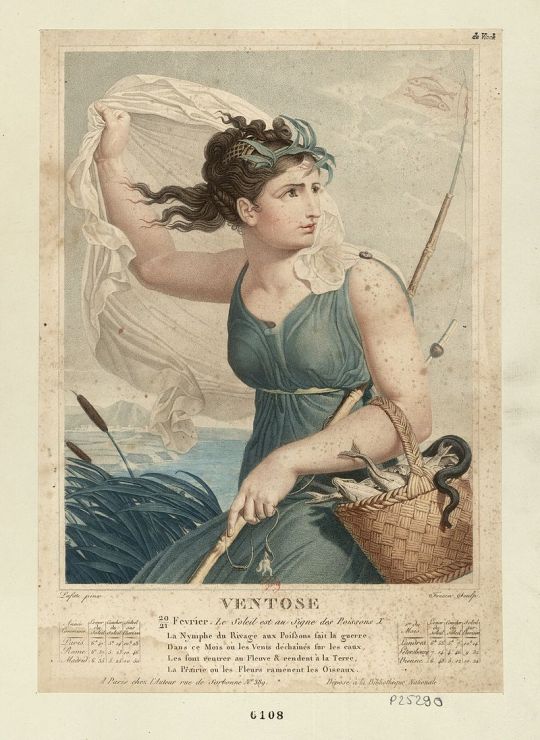

Le calendrier républicain, adopté pendant la Révolution française, était une tentative de rompre avec le passé monarchique et catholique en instaurant un système de mesure du temps basé sur les valeurs républicaines et agricoles. Chaque jour du calendrier républicain était dédié à une plante, un animal, un outil ou un événement symbolique, reflétant ainsi les idéaux de la Révolution.
Le mois de Ventôse dans le calendrier républicain français, correspondant généralement à la période entre le 20 février et le 20 mars, symbolisait le début de la transition vers le printemps. Associé au vent, ce mois était marqué par les premiers signes de renouveau et d'activités agricoles, préparant le terrain pour la saison à venir.
La journée du 26 Ventôse dans le calendrier républicain français est dédiée au pissenlit, une plante qui symbolise la vitalité et la résilience. Cette journée célèbre non seulement la beauté de cette humble fleur jaune, mais aussi ses nombreuses utilisations et ses vertus médicinales.
Le pissenlit, également connu sous le nom de "dent-de-lion", est une plante commune que l'on trouve dans de nombreux environnements, des prairies aux jardins urbains. Sa fleur jaune vif et ses feuilles dentelées en font une plante facilement reconnaissable.
En plus de sa beauté, le pissenlit est également une source précieuse de nutriments. Ses feuilles sont riches en vitamines A, C et K, ainsi qu'en minéraux tels que le fer et le calcium. Les racines de pissenlit peuvent également être séchées et torréfiées pour faire un substitut de café.
Sur le plan médicinal, le pissenlit a été utilisé depuis des siècles pour traiter divers maux. Ses propriétés diurétiques en font un remède naturel efficace pour les problèmes rénaux et urinaires. De plus, ses feuilles peuvent aider à stimuler la digestion et à purifier le foie.
Cependant, le pissenlit est bien plus qu'une simple plante médicinale. Il joue également un rôle important dans l'écosystème en tant que source de nourriture pour de nombreux insectes, et ses fleurs sont particulièrement appréciées par les abeilles pour leur pollen et leur nectar.
En célébrant la journée du 26 Ventôse, nous sommes invités à reconnaître la valeur et la polyvalence du pissenlit. Que ce soit en tant que nourriture, médicament ou simple objet de beauté, le pissenlit mérite d'être honoré pour sa contribution à notre monde naturel.
***
The Republican calendar, adopted during the French Revolution, was an attempt to break away from the monarchical and Catholic past by establishing a system of time measurement based on republican and agricultural values. Each day of the Republican calendar was dedicated to a plant, an animal, a tool, or a symbolic event, thus reflecting the ideals of the Revolution.
The month of Ventôse in the French Republican calendar, generally corresponding to the period between February 20 and March 20, symbolized the beginning of the transition towards spring. Associated with the wind, this month was marked by the first signs of renewal and agricultural activities, preparing the ground for the upcoming season.
The day of 26 Ventôse in the French Republican calendar is dedicated to the dandelion, a plant symbolizing vitality and resilience. This day celebrates not only the beauty of this humble yellow flower but also its many uses and medicinal virtues.
The dandelion, also known as "lion's tooth," is a common plant found in various environments, from meadows to urban gardens. Its bright yellow flower and toothed leaves make it easily recognizable.
In addition to its beauty, the dandelion is also a valuable source of nutrients. Its leaves are rich in vitamins A, C, and K, as well as minerals such as iron and calcium. Dandelion roots can also be dried and roasted to make a coffee substitute.
Medicinally, the dandelion has been used for centuries to treat various ailments. Its diuretic properties make it an effective natural remedy for kidney and urinary problems. Furthermore, its leaves can help stimulate digestion and purify the liver.
However, the dandelion is much more than just a medicinal plant. It also plays an important role in the ecosystem as a food source for many insects, and its flowers are particularly favored by bees for their pollen and nectar.
By celebrating the day of 26 Ventôse, we are invited to recognize the value and versatility of the dandelion. Whether as food, medicine, or simply a thing of beauty, the dandelion deserves to be honored for its contribution to our natural world.
#calendrier#calendrier républicain#calendrier républicain français#calendrier révolutionnaire#calendrier révolutionnaire français#france#français#révolution#ventôse#fleur#pissenlit#nature#agriculture#french revolution#french republic#french calendar#french#dandelion
1 note
·
View note
Photo

Western Iranian turban helmet, ca. 1475-1500, steel with silver etchings
Housed at the Art Institute of Chicago
0 notes
Note
Mediterranean people doesn’t experience racism but experiences colorism & ethnicism? Like Spaniards and Greeks who are very dark skinned. Italians too with dark skinned and they’re fetishized for their dark skin yet are discriminated bc they don’t meet the “true European standard” it’s so fucked white people are so weird they hate members of their own race
OMG LISTEN!!!! in greece we have a lot of immigrants from albania. albanians are white but most of them are dark skinned. they experience extreme xenophobia in addition to everything u mentioned but, idk if its just a greece thing (ive heard its a thing in balkans in general) but they call it racism. just racism is so generalized here that rarely anyone uses ters such as "misogyny" or "homophobia" (except lgbt ppl) and so on ,, like when i was at school our teacher would refer to those as "racism towards women" and "racism towards gay people". which is literally so dumb it made my eye twitch but yea. as for that last part yea ur right theres extreme fetishization towards them AND discrimination ,,, european beauty standards r dumb anyway. but here "being as tanned as possible" is a thing n ive had other white ppl call me "disgusting" for not getting tans n i just found so funny bc. pal. what now
#asks#idk i feel like greece lives in the 15th centure im gonna keep it real with u chief#ofc i dont know a lot abt whats going on in other Mediterranean countries so#i dont rly wnna say much abt it sorry!!!!#bt anyway yea!!! greece is dumb n i cant wait until i move out ksjfjdk
2 notes
·
View notes
Photo


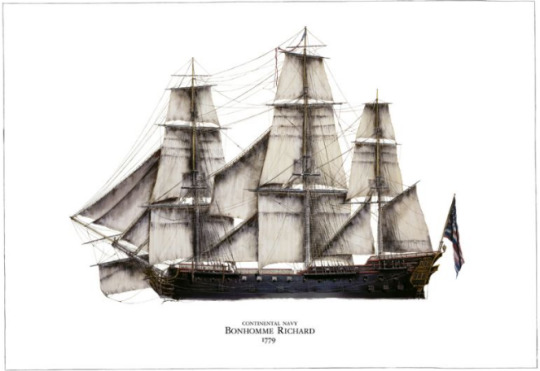
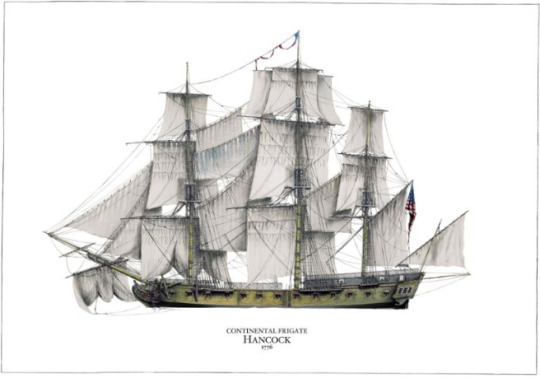
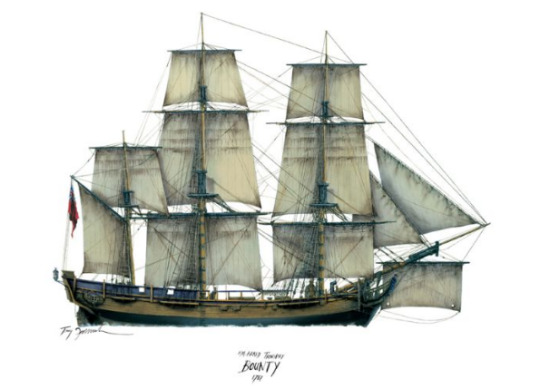

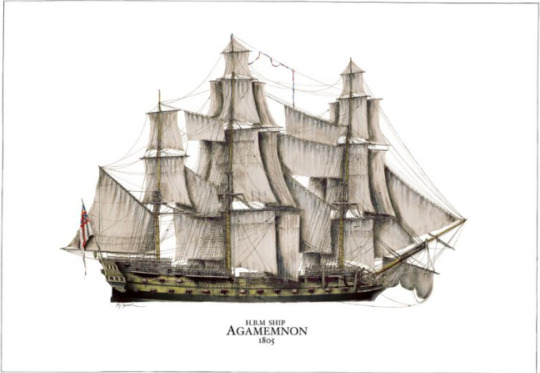

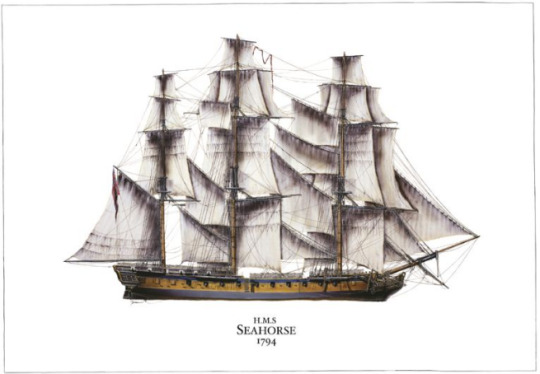

Different ships from the 15th to the 19th centur, by Tony Fernandes
#naval art#different ladies#different countries#15th - 19th century#couldn't resist#they are so beautiful#age of sail
165 notes
·
View notes
Note
Can you explain how a slave revolt in the Bahamas could have changed the history of America?
HELLO ANON FROM LIKE FOUR MONTHS AGO! I kept meaning to go back to this and then uhhh forgetting to do that. (Also thank you for indulging me and sending this sort-of-directly-asked-for-question lmao)
So. Here’s a brief overview of how a successful slave revolt like in Black Sails could have changed the history of not just America, but the entire world. And quite, well - easily - had the circumstances in Black Sails presented themselves.
First off, standard disclaimer that this is all conjecture based on my own research and knowledge of both history and Black Sails. It isn’t meant as a takedown of anyone else’s views, or the character’s actions. The strongest I would call this is a wishful critique of the choices the writers made to include the things they did in the way they were included, and the way those same writers chose to end the story they chose to tell. And maybe, a little bit, a frustration of how the inevitability of american history is used as a given in fandom to defend certain character’s actions - but it is not meant to invalidate the reasons behind those actions. Just to point out that those reasons were more emotionally than factually driven (Which is cool! And very real to the kinds of tragedies that play out in real life revolutions! Vive le realismé!)
Also quite obviously I’m not a professional in any way. I was eating soup from a can as I wrote this. I am now eating cookies for dinner. I am writing this because it’s fun for me. It’s fun!! If deep thought-experiment type analysis of media isn’t your cuppa, that’s fine - you can keep scrolling.
I’ve included major historical events from 1700-1740 since that is the general time period that Black Sails draws its history from. In particular, most of the later seasons’ historical references come from the 1730s. While I’ve tried to be as thorough as possible...there are so many ways history could have been changed by a tiny action that it would be impossible to cover them all. For brevity, I’m focusing on the history of the Bahamas, the Caribbean, and Colonial America. I’ll touch on other places as is relevant but like......it’s world history for a reason.
Okay, here goes.
So first and foremost, to understand how it’s destruction could have changed America, you really need to understand just how much economic power chattel slavery gave colonial empires and England in particular.
Slavery was the most important economic force in Colonial England, and not just in what the slaves produced. The slave trade itself was the most lucrative business in existence at the time. If you want to learn more about that, I highly recommend listening to this podcast, which does an excellent job of explaining how the economic buying and selling and bonding of slaves was of such value to colonial empires. This is important because the most powerful contemporary argument for the continuation of slavery was that it “could not be ended in the Americas until there was certainty that it wouldn’t create social or economic irritation.” (Thomas Jefferson, 1783.)
(Slavery in itself is not something that was unique to the british empire or even the Imperialist governments that created it. Most cultures have had some form of slavery. However, this was not the type of generational slavery that colonial empires employed. In most cases before the 1400s, slaves were not kept slaves solely based on the color of their skin - they were war prisoners, criminals, or debtors. In most cases, slaves could work to buy their freedom, and most importantly, slavery was not an inherited state that passed from parent to child.
What we think of in terms of colonial slavery is chattel slavery - which is the kind of slavery Europeans imposed on Africans starting in the fifteenth century. These slaves could not buy their freedom. They were viewed as property instead of human beings based on their race and their children were automatically enslaved in the same way they were. They were mistreated, and viewed as subhuman, without any chance of escaping the bonds which had been forced upon them.
Because of this new type of slavery that started in the colonial era, Europeans needed to justify why they were entitled to own other people as slaves. They needed to convince themselves and other people that there was some moral justification for chattel slavery. This is what led to all the myths of ‘happy’ servitude, racial inferiority, and any ‘benefits’ slavery imparted to slaves. These were all lies created by philosophical thinkers and plantation owners and politicians that let settlers convince themselves they were not committing crimes of immense magnitude against other human beings. For much of the colonial era, these were the norm in thinking and their vestiges still linger today. But these were used to justify slavery because of how important it was economically.
And of course there were always dissenters. Since slavery was first introduced to the colonies there were people who knew that this sort of treatment was just not very gucci. These people argued that slavery went against the very nature of a ‘just’ society. That benefitting off the mistreatment of other human beings was akin to spiritual robbery, and that “European colonies should be destroyed rather than create so many unfortunates!” (Louis Jaucourt, 1754). With your goddamn motherfucking chest Jaucourt. The Quakers of Pennsylvania were strong proponents of abolition since the 1670’s! James Oglethorpe(yes, that Oglethorpe) himself was a staunch abolitionist who went as far as to make slavery illegal in Georgia when he formed the colony in 1733.
The economic power of slavery was used as a justification to keep it intact for hundreds of years and many colonists were happy with this, but it’s important to remember that not everyone was. England and the colonists were far from unanimously in support of the practice. This becomes important later! Like, this is the basis for the whole argument of how a drawn out war in the Bahamas could have ended slavery and changed colonial imperialism.)
OKAY NOW THAT WE’VE GOT THAT COVERED.
Now let’s go to the people it affected. Enslaved black people have been fighting against their enslavement since they were taken from their homes and brought across the Atlantic in the 15th century. Starting in the 1700s, slave revolts started to see more and more success in these efforts, until in the late 1700s and early 1800s public opinion of slavery finally dropped enough that it was outlawed in the colonial empires of England and France. In the years of 1700-1740, there were several rebellions in the North American area including:
1712 New York Slave Revolt (British Province of New York)
1730 Chesapeake rebellion (British Chesapeake Colonies)
1733 St. John Slave Revolt (Danish Saint John)
1739 Stono Rebellion ((British Province of South Carolina)
1741 New York Conspiracy (British Province of New York)
And of course,
1728-1739 First Maroon War (British Jamaica)
This is the war which the war in Black Sails is based on. The treaty that was offered by Woodes Rogers in Black Sails is almost word for word(minus the pirates bit) the treaty offered to the Leeward Maroons in this war. There are references to the factions in this war and even some of the historical people involved in it. The major difference? The Maroon war was successful. The Maroons were so good at warfare on their turf that the British were unable to sustain any major victories against them. After ten years they offered the Maroons a treaty granting them governmental agency(although not independence). In return, the Maroons agreed to return any escaped slaves back to the British, and to help the British fight off “invaders”. The Leeward maroons led by Cudjoe(Julius, in Black Sails) took this offer to avoid more fighting because he believed in an honorable peace with the enemy. Queen Nanny and her Windward Maroons(The Maroon Queen and Madi in Black Sails) refused because like....bruh those terms suck. After a year she was pressured into relenting by Cudjoe, but within thirty years the Maroons had started another war, dissatisfied with how the treaty was being carried out.

(This is Queen Nanny. And yes, she is better than you.)
I also need to mention that Africans were not the only ones in North America hurt by British Colonialism, nor the only ones for whom abolition and an end to colonial empire was attractive. The Native Americans were also a constant frustration to the colonies, and, because it’s relevant to later things, I want to mention one incident in particular:
The Yamasee War (1715-1717)
The Yamasee were a Lower Creek tribe that lived in what is today Georgia/Florida. The war was fought over a bunch of different things, including trading systems and colonists depleting the game in the area, but also because of the colonists’ nasty habit of trying to enslave Native American people. Bummer. So a bunch of tribes(and I mean a bunch - there were Shawnee and Cherokee factions, as well as about half a dozen other distinct nations that joined in the fight in sort of that loose ‘hey you hate these guys? we hate these guys!’ way.)
Long story short, this war was a pretty significant factor in the colonists in the South not enslaving(outright) Native Americans anymore, and instead increasing the import of African slaves to the south. After this war the Yamasee split into two factions, one anti-colonist and one pro-colonist. The pro-colonist people called themselves the Yamacraw, and it was these people who granted Oglethorpe(yes, that Oglethorpe) the land which he used to found Georgia. Moral of the story, alliances between abolitionists and indigenous tribes were already in place in the colonies. Just waiting for a chance to be used.

(Tomochichi, the leader of the Yamacraw and very cool accessorizor)
(Yet ANOTHER thing to keep in mind is that before the end of the 18th century, both Haiti and Grenada would see major revolutions against their colonial empires. Slaves in all provinces and colonies were continually fighting for their freedom. What they lacked was a unifying force that supplied them enough power and cohesion to fight the empire man-to-man, so to speak.)
SO. INTO THIS SCENE, ENTER JAMES FLINT - ANGRIEST OF MLM SCALLYWAGS AND TACTICIAN EXTRAORDINAIRE.

(So cute.)
Anyway, the Golden Age of Piracy was largely over by the early 1720 - most of the pirates of Nassau took Rogers’ pardon and reintegrated as citizens of society. That or they like....died. A lot of them died. Gruesomely. Nasty business, piratry. So, if we assume that in Black Sails’ history that Flint and Silver managed to convince the Maroons to rebel ten years earlier, join with the pirates who did not want to assimilate, and start a revolution; now instead of two separate wars Britain is now fighting one much bigger, nastier, more expensive one.
Backed by people with a good deal of money at their disposal. Cha-ching.
Keep in mind that Britain had already been at war for almost thirty years with first the Glorious Revolution and the Jacobite risings(1688-forever) and the War of Spanish Succession(1701-1714). Their resources had already been depleted. And this was why the American colonies(and India) had become so important to them. Remember what I said about the economic importance of slavery? It’s because Brtitain was using the slave trade to refill its coffers after an extensive and costly military campaign.
So now, this new war is not only putting an additional drain on the empire’s resources before Britain has had a chance to replenish itself but it is also taking away the very source of income needed to replenish itself. (Since the war would target places heavy with slave trading.) In addition, the pirates handed a significant defeat to the British Navy that ended with the Navy retreating - turning tail and running from the island. This was actually a huge victory and one that was sort of downplayed in the show but would be incredibly significant in the event of a long campaign.
Rogers is not taking Nassau with the full support of Britain. He is only fighting with the traitors who did not return when the Navy withdrew. That is why he has to go to Spain in the first place.
The show has also told us that this rebellion is already starting to be widely known - pirates and slaves from Barbados, the Bahamas, as far as Massachusetts are coming to aid the rebellion in the hopes of freedom. This is not a small thing.
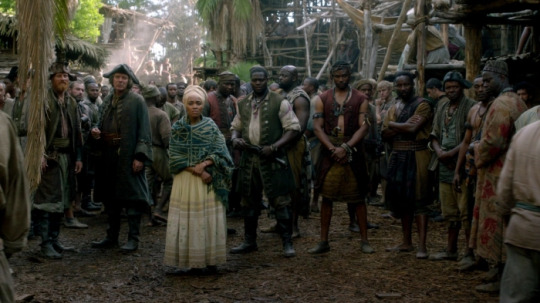
Even with the loss of the Walrus and most of the Walrus crew, there are still thousands of fighters on the Maroon Island. Slaves, mainland pirates - the defeat of the Walrus was a personal defeat but in the grand scheme of a larger war it was a small loss in what was ultimately a huge victory.
Rogers has been squarely defeated. Because of that, they now have Nassau as a base. The war now has two strongholds - one protected by the forest and one protected by a fort - into which they can store supplies, retreat, and organize attacks from. If they can free the rest of the slaves on the island of Nassau and either oust or convert the puritans, all the better.
The war at the point Rogers is defeated was far from a never-ending thing. In fact I would say that Flint is absolutely right - they are incredibly close to a decisive victory. England cannot afford to muster a large enough force to defeat two entrenched enemies working together - especially ones as well financed as we’re led to believe the chest would make the Maroons and Pirates. Even if Britain could somehow convince Spain and/or France to join them, both of those nations have also been severely depleted by wars of their own. And again, the more nations that Britain brings in, the more potentially disaffected people could be brought in to join the pirates(see, Haiti and Grenada specifically, both of which were French colonies at the time, and the Spanish colonies of Cuba, Puerto Rico, etc).
So from here, the smartest thing for the rebellion to do would be to hit large plantations: to both free the slaves and cripple Britain’s economy. Make slavery more costly to enforce than it is profitable to sustain, and build their numbers for the war as well, as well as like, you know, freeing slaves. Make it so that Britain could not sustain the cost of trying to fight it - as James said all the way back in 1705. Force a surrender on economic grounds.
So now, the power behind the empire has been broken. Even assuming a modest victory, the course of the entire world - not just the Americas - has changed. In victory, let’s say the Bahama/Caribbean islands are freed from British rule. Slavery in the americas will also never be able to get the foothold it does, historically.
With a free nation actively willing to target slave plantations and ships sitting between it and Africa, the colonial slave trade is finished. Now sure, they could use the existing slaves, but it would be oh-so-easy for the Pirates and Maroons, alongside their hopeful new Native and abolitionist allies, to target large plantations and cripple them.
If slavery never gets a foothold in the south, northern colonies never build the banks and mills and economic powerhouses that profit from the cheap produce, and most find another way to survive. Perhaps, if we’re going really all out, they start working with the native americans - learning ways to cultivate and grow crops with the land and in balance, rather than clearing thousands of acres for damaging cash crops.
I want to be really, really clear about this because it is incredibly important. Without slavery, the British empire would not have bee able to sustain itself. It would not have the power. And the more it tried to tax the colonists to recoup its losses, the angrier those people were likely to get, and perhaps join the Maroons and Pirates, or perhaps evens start the american revolution early - maybe even with the help of the newly independent Jamaican/Bahaman island nations.
This break in the power of colonial empires would shift world history into something unrecognizable as we know it. The empires would still exist, of course, but they would be set on their heels - France and Spain would see what happened to Britain and be less inclined to keep slavery legal in their own colonies. Power is split more evenly among the world, and indigenous and black/African nations are not wiped out in genocidal bids for power.
Which brings me to India. If the Indian rebellions learned of what happened in America and the Bahamas, or if america had drained enough of britain’s resources that the British East India Trading Company was not able to be as controlling of the area, this could have meant independence centuries earlier, as well as a much easier path to independence. Think about what could have been if the Indian people had been able to oust a struggling empire from its shores an entire century before it historically did.
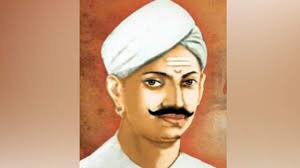
(This bad boy is Mangal Pandey, who led the first major Indian revolution in the mid 1800s. In the movie adaptation his boyfriend best friend is played by Toby Stephens so I’m connecting the dots.)
Once the colonies of America and India are gone, Britain loses almost the entirety of its colonial power. (And this isn’t even including all the smaller colonies which could cloak their own independence in these big revolutions and the lack of (as much) of an indigenous genocide in many of these places. The economic disparity that defines Black experience in places that the British colonial system touched never gets a hold, and they are able to build their own economies in ways that benefit them and the places they live.
Think about the wealth of culture in ALL nations that would not have been destroyed, had Britain not been allowed to swallow whole swaths of land whole.
And, look. I know this is fiction. I know that of course, none of this happened, and that Black Sails is a fictional landscape. I know that so many things could go differently than I imagine them. I know that to extrapolate like this relies heavily on actually caring about a world that is completely different from ours and envisioning how that could come about.
I also know, that it is just as important to tell these sorts of stories as telling stories about how small acts could have changed things immensely, as it is to tell them about how society must stay the same. It is just as important to tell stories about ‘what if colonialism were able to be stopped’ as it is to tell dystopian stories about the end of the world. It may not be as much fun, but it is important to remember that our power doesn’t lie an indiscernible amount of time in the future, after the world has already gone to shit. It lies with us, right now. And that even if it is hard to see, our actions have the power to shape history.
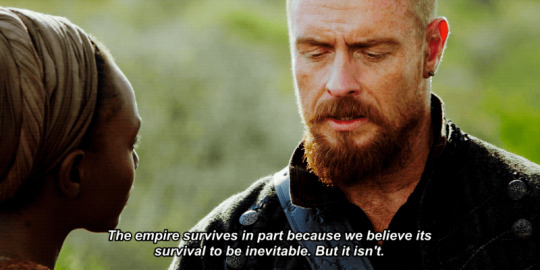
#annyway have a BUNCH OF FEELINGS AND HISTORICAL FACTS BUNDLED TOGETHER AS FANDOM META#black sails#milos black sails meta#black sails and colonialism#james mcgraw#madi scott#uhhhhhhhh#historical meta#IDK MAN WHAT TO TAG THIS JUST INDULGE ME AND READ IT LMAO#long post#god i hope the readmore works lmao#Anonymous#black sails meta
70 notes
·
View notes
Text
;; I know it shouldn’t be something that I get so worked up over, but it’s a pet peeve of mine when I see someone refer to a particular century wrong. Like.. Please remember that the first century started at zero, which means that from year 100 and on through that century was the second century, not the first. And it goes on like that, so when people talk about the 15th centur, they’re supposed to be referring to the 1400s, not the 1500s.
Sorry. Just a little something that bugs me.
1 note
·
View note
Link
0 notes
Photo

Just some of the spectacular tiled-interiors at Casa de Pilatos. The 15th centur… Just some of the spectacular tiled-interiors at Casa de Pilatos. The 15th century palace has been home to the Dukes of Medinaceli, the ceramic details are breath-taking and the guided visit around the first-floor art and antiques collection is worth doing too 👍 More info @casadepilatos · · ·
0 notes
Photo

Look at this ridiculously cute dragon-puppy creature. #dragonpuppy.
From a 15th-centure Book of Hours (MS Hirsh 18) at Lehigh University’s Linderman Library.
#bibliophilly#puppies#dragons#lehigh#adorable#illuminatedmanuscript#medieval#medievalmanuscript#rarebooks#books#pacscl#lindermanlibrary#lehighuniversity#cute#puppy#dragon#dragonpuppy
123 notes
·
View notes
Text
[:en]History of French Renaissance[:]
[:en]History of French Renaissance[:]
[:en]The French Renaissance is an artistic and cultural movement located in France between the end of the 15th century and the beginning of the 17th centur. Stage of modern times , the Renaissance appears in France after the beginning of the movement in Italy and its spread in other European countries.
As in Italy , its characteristic features are the thirst for life, the trust in man , the…
View On WordPress
#Cultural history of France#French art#French Renaissance#Northern Renaissance#Renaissance#Renaissance architecture in France
0 notes
Text
I know I am centures late to this debate, put fuck designo it is colore all th way. If you want designo , go lick a pencil and put down the oil paint, it is not for babies.
Unpopular opininon. Outside of the netherlands nobody knew how to paint until Tintoretto , Titian and El Greco. Rafaello sucked ( I guess his colours wer okay). And while all architecture sucks, I can tolerate baroque architecture better.
All the 15th and 16th pallazos can rot , Palladio included
1 note
·
View note
Photo

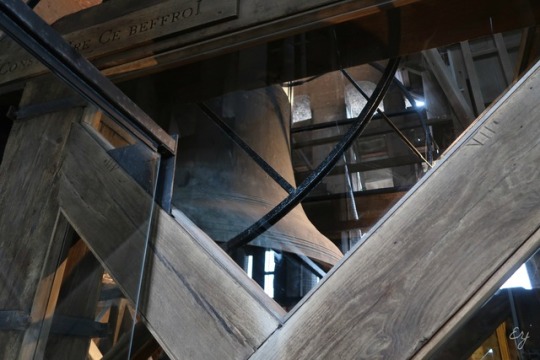
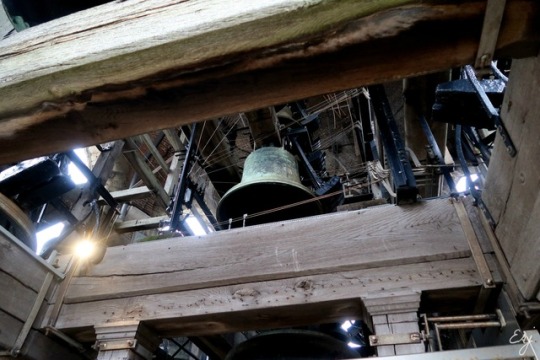
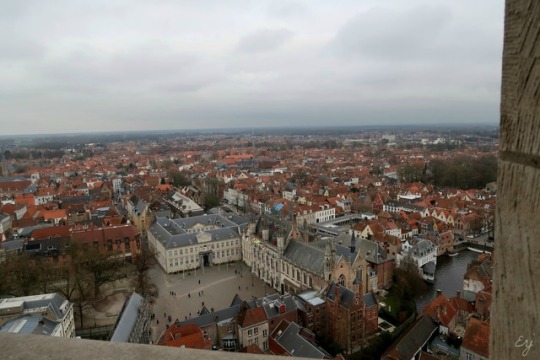
21.2.17
We climbed the 366 steps of the 15th Centure Belfry and were treated to a breathtaking view of Brugge and the are sorrounding it.
0 notes